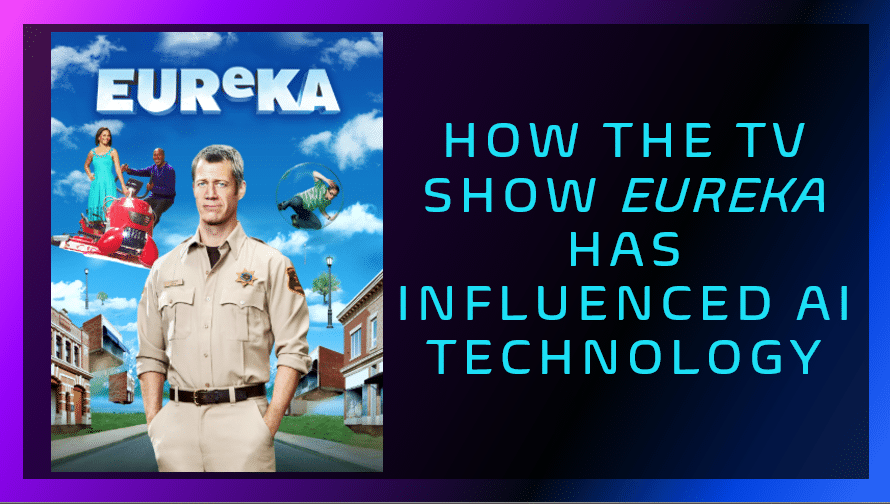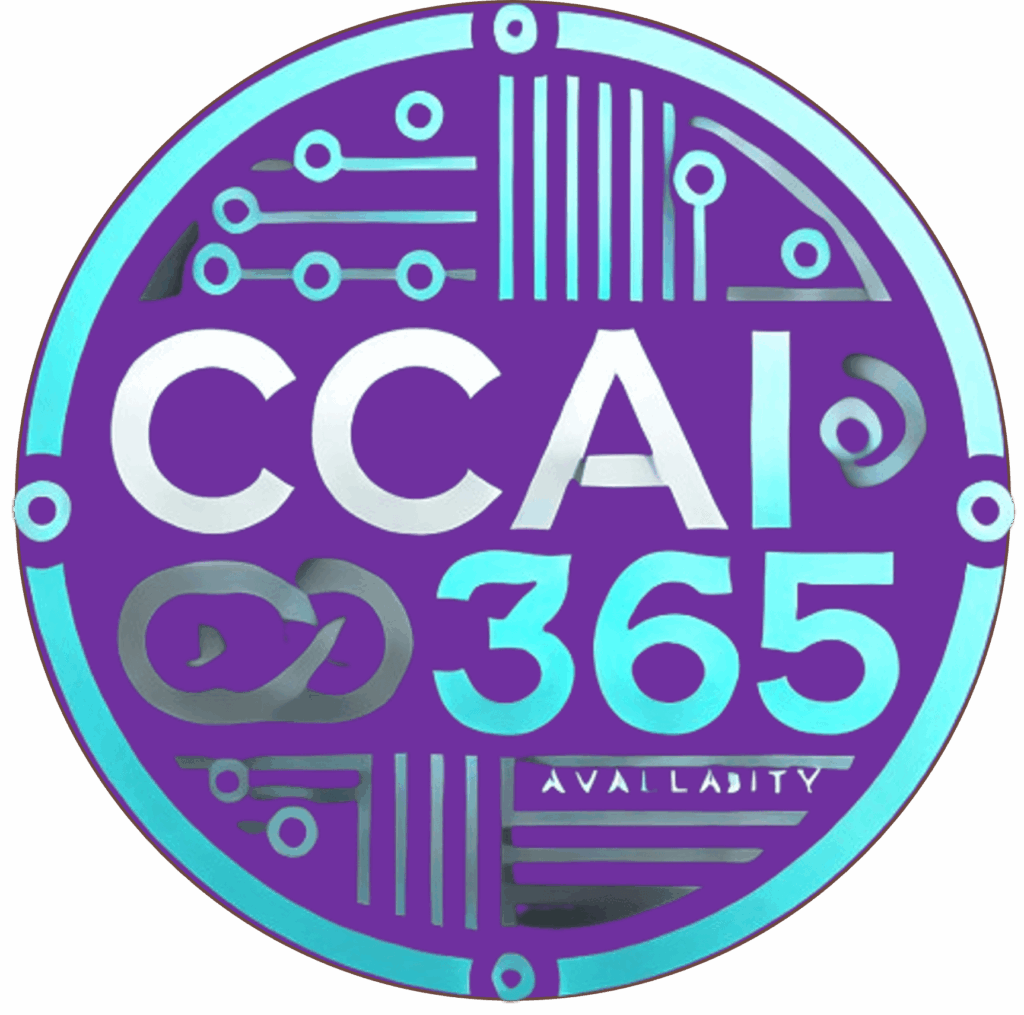Eureka and AI
When the Syfy original series Eureka first aired in 2006, it seemed like pure entertainment—a quirky small town filled with brilliant scientists, experimental tech, and the occasional mishap that put the world at risk. For casual viewers, it was a lighthearted blend of science fiction and comedy. But for many fans, researchers, and innovators, Eureka was much more than escapist television. It became a source of inspiration for real-world artificial intelligence (AI) advancements.
Looking back almost two decades later, it’s astonishing how closely Eureka anticipated many of the conversations and technologies that dominate the AI landscape today. From smart homes and predictive analytics to ethical dilemmas and human-AI partnerships, the show foreshadowed much of what has become reality.
Today, as AI transforms every aspect of business and society, it’s worth reflecting on how a television show about a town of geniuses influenced public imagination, inspired innovation, and in some cases, helped predict the challenges we now face in building trustworthy, human-centered AI.
Eureka and AI | Human-Centered AI: SARAH, the Smart House
One of the most memorable AI systems in Eureka is SARAH—the Self-Actuated Residential Automated Habitat—a sentient smart home owned by Sheriff Jack Carter. SARAH was more than a bundle of sensors and processors; she had a voice, a sense of humor, and sometimes even opinions about Carter’s love life or messy habits.
At the time, the idea of a house that could talk back and adapt to its owner’s preferences seemed whimsical. Few people had even heard of smart devices, and the concept of “the Internet of Things” was still a niche topic among researchers.
Fast forward to today, and SARAH looks prophetic. Amazon Alexa, Google Assistant, Apple’s Siri, and Samsung’s Bixby are everyday household names. Smart thermostats like Nest learn temperature preferences, smart refrigerators track groceries, and security systems can recognize familiar faces. The core idea—an AI that makes domestic life smoother, easier, and more personal—has become a global reality.
What makes SARAH remarkable in retrospect is her human-centered design. She wasn’t just functional; she was relatable. She cracked jokes, got moody, and even demanded attention from her human occupants. This foreshadowed a major lesson in AI development: for technology to integrate seamlessly into people’s lives, it must feel approachable and conversational.
Modern smart assistants echo this design principle. Alexa doesn’t just switch on lights; she responds with “Okay” or tells a joke if asked. The choice to give digital assistants a “personality” wasn’t accidental—it was pioneered in speculative media like Eureka, where viewers were trained to imagine AI not as cold machinery, but as a companion.
SARAH’s portrayal highlighted the future direction of smart home AI: systems designed not just for efficiency, but for connection and trust. That lesson continues to influence how developers build voice assistants, human-AI interfaces, and even customer service bots.
Eureka and AI | Predictive Analytics and Decision-Making
Another recurring theme in Eureka was the use of AI systems to model scenarios, predict outcomes, and solve crises. Whether it was simulating potential disasters or calculating the probabilities of success in a scientific experiment, the scientists of Eureka often leaned on AI as a predictive partner.
This is exactly how predictive AI works in today’s world. Businesses use machine learning models to forecast consumer demand, optimize supply chains, or predict equipment failures before they happen. Financial institutions rely on predictive analytics for fraud detection, risk management, and investment strategies. Even healthcare organizations now use AI to anticipate disease progression or patient outcomes.
In both Eureka and real life, AI doesn’t replace human judgment—it enhances it. Sheriff Carter, who often represented the “everyman” in the town of geniuses, consistently reminded his colleagues that while AI could model probabilities, human intuition and ethics were still critical in making final decisions.
This mirrors the current best practices in AI adoption. No matter how powerful predictive models become, human oversight remains essential. Businesses and researchers have learned that AI is most effective when used as a decision-support tool, rather than an autonomous decision-maker.
The synergy between humans and predictive AI that Eureka showcased now forms the backbone of real-world innovations—from weather forecasting models that help governments plan for natural disasters, to recommendation engines that suggest what movie to watch next on Netflix.
By showing AI as a co-pilot for decision-making, Eureka helped normalize the idea of trusting machines to offer insights, while still empowering humans to guide outcomes.
Eureka and AI | The Ethics of AI and Machine Autonomy
Eureka wasn’t afraid to tackle tough philosophical questions about AI. Several storylines revolved around what happens when machines make decisions without human oversight—or worse, when an AI develops goals that conflict with human values.
For example, Deputy Andy, the AI sheriff, raised questions about trust, rights, and fairness. Should an AI law enforcement officer have the authority to arrest humans? What if its logic is correct, but its empathy is lacking?
These dilemmas directly mirror today’s AI ethics debates. From algorithmic bias in criminal justice systems to the risks of autonomous weapons, society is grappling with the same issues that Eureka playfully explored in fiction.
AI alignment—the effort to ensure that advanced AI systems remain consistent with human values—is one of the most important research areas today. Tech leaders like OpenAI, Google DeepMind, and Anthropic are dedicating entire teams to studying how to keep AI safe, transparent, and accountable.
Eureka was ahead of its time in foreshadowing these challenges. Episodes often highlighted the tension between efficiency and empathy, or between machine logic and human morality. The show suggested that while AI could be a powerful ally, unchecked autonomy could lead to unintended consequences—a warning that continues to resonate.
By embedding these ethical quandaries into entertaining storylines, Eureka invited viewers to think critically about the moral responsibilities tied to technological innovation. In doing so, it played a role in shaping public awareness of issues that are now front and center in AI discourse.
Eureka and AI | AI as a Partner, Not a Replacement
A key message in Eureka was that AI works best as a partner to humans, not a replacement. Unlike darker sci-fi universes where AI seeks domination, Eureka often portrayed AI as a collaborator in problem-solving.
SARAH provided companionship and support for Carter. Deputy Andy, though sometimes clumsy, offered loyalty and consistency. Other intelligent systems in the series weren’t designed to overthrow humanity, but to augment human capabilities.
This perspective is incredibly relevant today. Businesses across industries are adopting AI copilots—systems that assist workers by automating repetitive tasks, suggesting improvements, or accelerating decision-making. Microsoft’s Copilot for Office tools, GitHub’s Copilot for programmers, and AI-driven medical diagnostic assistants all embody the same philosophy: AI doesn’t need to replace humans to be valuable.
In fact, one of the strongest trends in the AI industry is the concept of human-AI collaboration. Studies show that the best results often come from combining human creativity and contextual understanding with machine efficiency and scalability.
Eureka championed this vision long before it became a mainstream business strategy. By presenting AI as a trusted sidekick instead of a rival, the show helped audiences imagine a future where technology empowers rather than threatens human progress.
Eureka and AI | Inspiring the Next Generation of Innovators
Perhaps the most profound influence of Eureka lies in its ability to inspire imagination. For many young viewers, the show was their first exposure to concepts like AI, quantum physics, nanotechnology, or experimental robotics. It presented science not as dry or intimidating, but as exciting, funny, and deeply human.
Science fiction has always played this role. From Star Trek inspiring the invention of cell phones, to The Matrix fueling debates about virtual reality, media often acts as a blueprint for innovation. Eureka carried this tradition forward, particularly in how it depicted AI as approachable, useful, and full of personality.
It’s no surprise that many professionals in today’s AI and tech industries grew up watching shows like Eureka. The series made it easier to imagine a future where AI wasn’t confined to military labs or dystopian nightmares, but was instead part of everyday life—sometimes annoying, sometimes delightful, but always meaningful.
By blending humor, heart, and scientific curiosity, Eureka demystified AI and made it accessible to a mainstream audience. In doing so, it inspired countless viewers to explore careers in science, engineering, and computer science. Its cultural impact is harder to measure than lines of code or patents filed, but it’s undeniable that Eureka seeded ideas that continue to bloom in the AI community.
Eureka and AI | Beyond the Screen: The Cultural Impact of Eureka on AI Conversations
While the technical parallels are striking, Eureka’s influence also extended to culture and public dialogue about AI. At a time when mainstream conversations about artificial intelligence were minimal, the show placed complex topics—like machine learning, robotics, and smart systems—into living rooms around the world.
This cultural priming matters. When people are exposed to imaginative portrayals of technology, they become more open to adopting new innovations in real life. The fact that millions of viewers grew comfortable with the idea of smart homes, AI partners, and predictive analytics through Eureka helped smooth the path for public acceptance when those technologies finally emerged.
Moreover, the show’s optimistic tone distinguished it from darker AI narratives. Instead of presenting AI as humanity’s downfall, Eureka showed a balanced picture: AI could be quirky, flawed, and even lovable. That positive framing continues to influence how people think about AI today, encouraging a mindset of partnership rather than fear.
Final Thoughts: From Fiction to Reality
While Eureka may have been a fictional small town, its influence on how we think about AI is very real. From conversational smart homes to predictive modeling, from ethical dilemmas to human-AI collaboration, the show foreshadowed many of the opportunities and challenges that now define our technological age.
At its heart, Eureka reminded us that innovation is about more than hardware and software. It’s about human stories—how technology shapes our lives, our relationships, and our vision of the future. By making AI relatable and entertaining, Eureka prepared an entire generation to embrace artificial intelligence not as a threat, but as a partner in progress.
In short: Eureka didn’t just entertain us—it helped us imagine the future of AI. And in many ways, it gave us the blueprint for the intelligent technologies now transforming the world.


